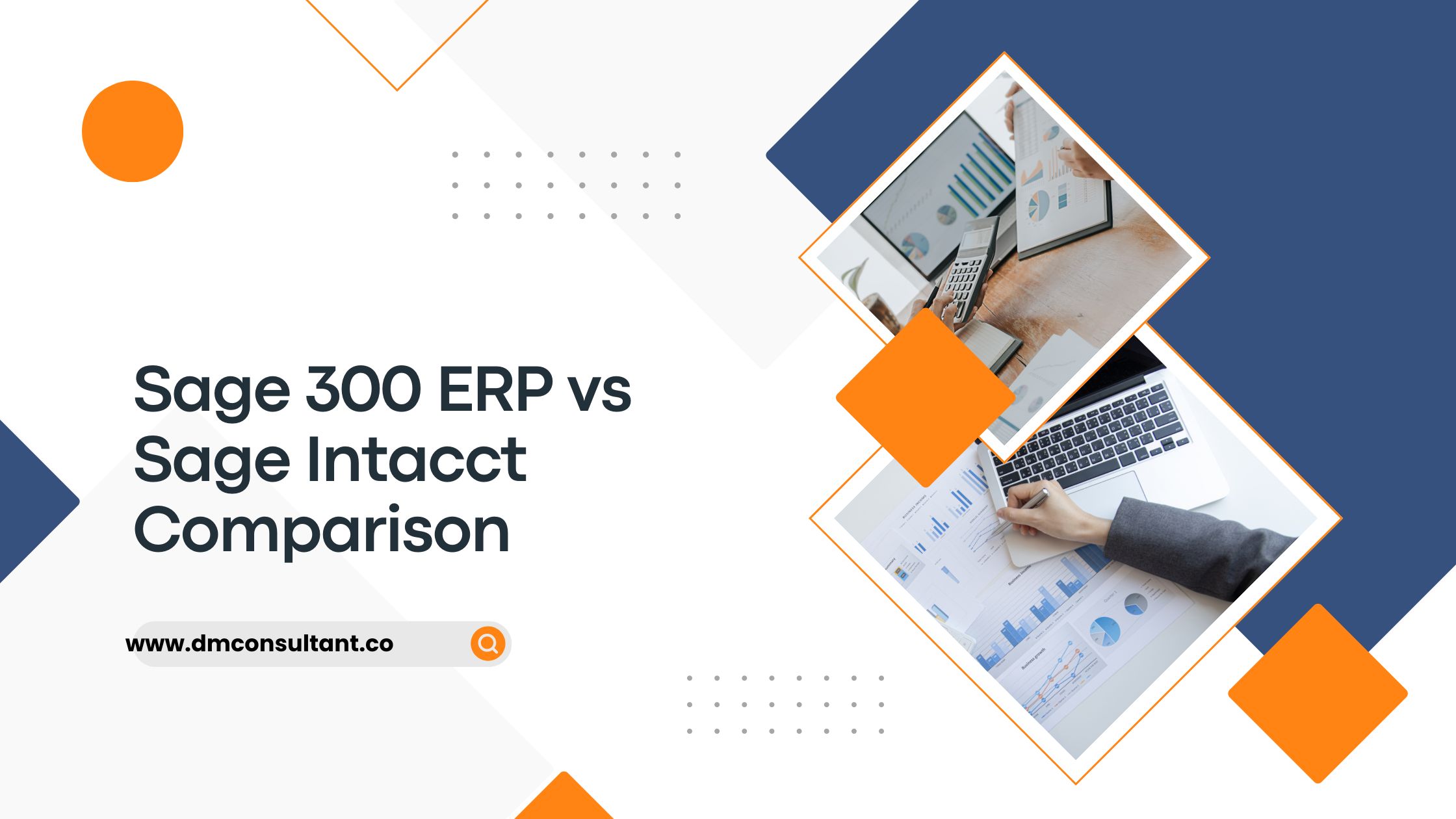When it comes to choosing the right enterprise resource planning (ERP) software for your business, Sage offers several robust options. Two of its most popular products are Sage 300 ERP and Sage Intacct. While both solutions are designed to streamline business processes and improve financial management, they cater to different business needs and come with unique features. This detailed comparison will help you understand the key differences and similarities between Sage 300 ERP and Sage Intacct, enabling you to make an informed decision for your organization.
Overview of Sage 300 ERP
Sage 300 ERP, formerly known as Accpac, is a comprehensive, on-premise ERP solution that caters to small and medium-sized businesses. It provides a suite of applications covering financials, supply chain management, and project management. Known for its flexibility and scalability, Sage 300 ERP can handle multi-company, multi-currency, and multi-language environments, making it suitable for businesses with complex operations.
Key Features of Sage 300 ERP
- Financial Management: Includes general ledger, accounts payable, accounts receivable, and cash management.
- Inventory and Warehousing: Manages inventory levels, warehousing, and order fulfilment processes.
- Project and Job Costing: Tracks project costs and profitability.
- Sales and Customer Management: Facilitates sales order processing and customer relationship management.
- Multi-Entity and Multi-Currency: Supports businesses operating in multiple countries and dealing with various currencies.
Overview of Sage Intacct
Sage Intacct is a cloud-based financial management solution aimed at small to medium-sized enterprises (SMEs). Known for its robust accounting capabilities, Sage Intacct excels in providing real-time financial and operational insights. The cloud-native design ensures accessibility from anywhere, anytime, and it integrates seamlessly with other business systems and applications.
Also, Checkout -> Sage 100 vs Sage Intacct
Key Features of Sage Intacct
- Core Financials: Includes general ledger, accounts payable, accounts receivable, cash management, and order management.
- Advanced Functionality: Features such as revenue recognition, project accounting, and fixed assets management.
- Real-Time Reporting and Dashboards: Provides comprehensive financial and operational reports and dashboards.
- Multi-Entity and Multi-Currency: Handles complex organizational structures and multiple currencies efficiently.
- Seamless Integrations: Integrates with various other business applications, including CRM and payroll systems.
Detailed Comparison
Deployment and Accessibility
Sage 300 ERP: Being an on-premise solution, Sage 300 ERP requires installation on local servers and is accessed via desktop applications. While this ensures control over data and security, it may involve higher upfront costs and ongoing maintenance.
Sage Intacct: As a cloud-based solution, Sage Intacct is accessible from any location with internet access. This reduces the need for physical infrastructure and provides scalability and flexibility. It also ensures automatic updates and easier compliance with data security standards.
Financial Management
Sage 300 ERP: Offers robust financial management capabilities that cater to complex business needs. It supports multi-company and multi-currency transactions, making it suitable for businesses with international operations. Its financial modules are comprehensive and can handle various accounting tasks efficiently.
Sage Intacct: Excels in financial management with real-time data access and reporting. Its advanced features like revenue recognition and project accounting are ideal for growing businesses that need detailed financial insights. The cloud platform enables quick access to financial information, aiding in faster decision-making.
Integration and Customization
Sage 300 ERP: Allows for extensive customization to fit specific business processes. However, integrating with other systems might require additional effort and resources due to its on-premise nature. It is flexible but may involve complex setups for integrations.
Sage Intacct: Known for its seamless integration capabilities, Sage Intacct connects easily with other cloud-based applications, including Salesforce, ADP, and more. The open API architecture simplifies the integration process, making it easier to connect various business tools and systems.
Reporting and Analytics
Sage 300 ERP: Provides robust reporting tools that can be customized to meet specific business needs. However, real-time data access might be limited compared to cloud-based solutions, and generating complex reports can be more time-consuming.
Sage Intacct: Offers advanced reporting and dashboard capabilities with real-time data access. Its financial and operational insights are presented through user-friendly dashboards, making it easier to monitor performance and make informed decisions quickly. The reporting tools are highly flexible and can be tailored to specific needs.
Scalability and Flexibility
Sage 300 ERP: While it is scalable and can handle growing business needs, the on-premise nature means scalability involves additional hardware and maintenance costs. It offers flexibility in customization but may require significant IT resources for scaling.
Sage Intacct: Highly scalable due to its cloud-based architecture, Sage Intacct can easily accommodate growing businesses without the need for significant additional investments. The flexibility of accessing the system from anywhere enhances operational efficiency and supports business expansion.
Cost and Maintenance
Sage 300 ERP: Typically involves higher upfront costs for hardware and software installation. Ongoing maintenance, updates, and IT support add to the overall cost. However, it provides complete control over data and security.
Sage Intacct: Operates on a subscription-based model with predictable monthly or annual fees. There are no significant upfront costs for hardware, and maintenance and updates are handled by the provider. This reduces the total cost of ownership and simplifies budgeting for IT expenses.
Which One is Right for Your Business?
Choosing between Sage 300 ERP and Sage Intacct depends on your specific business needs and operational preferences.
- Sage 300 ERP is ideal for businesses that prefer an on-premise solution and require extensive customization. It is well-suited for companies with complex operations, including multi-entity and multi-currency environments.
- Sage Intacct is perfect for businesses seeking a cloud-based solution with robust financial management capabilities. It is particularly beneficial for companies looking for real-time insights, scalability, and seamless integrations with other business applications.
Conclusion
Both Sage 300 ERP vs Sage Intacct are powerful ERP solutions with their own strengths. By understanding the unique features and capabilities of each, you can select the one that aligns best with your business goals and requirements. Whether you prioritize on-premise control with Sage 300 ERP or cloud-based flexibility with Sage Intacct, Sage provides reliable tools to enhance your financial management and streamline your business processes.


